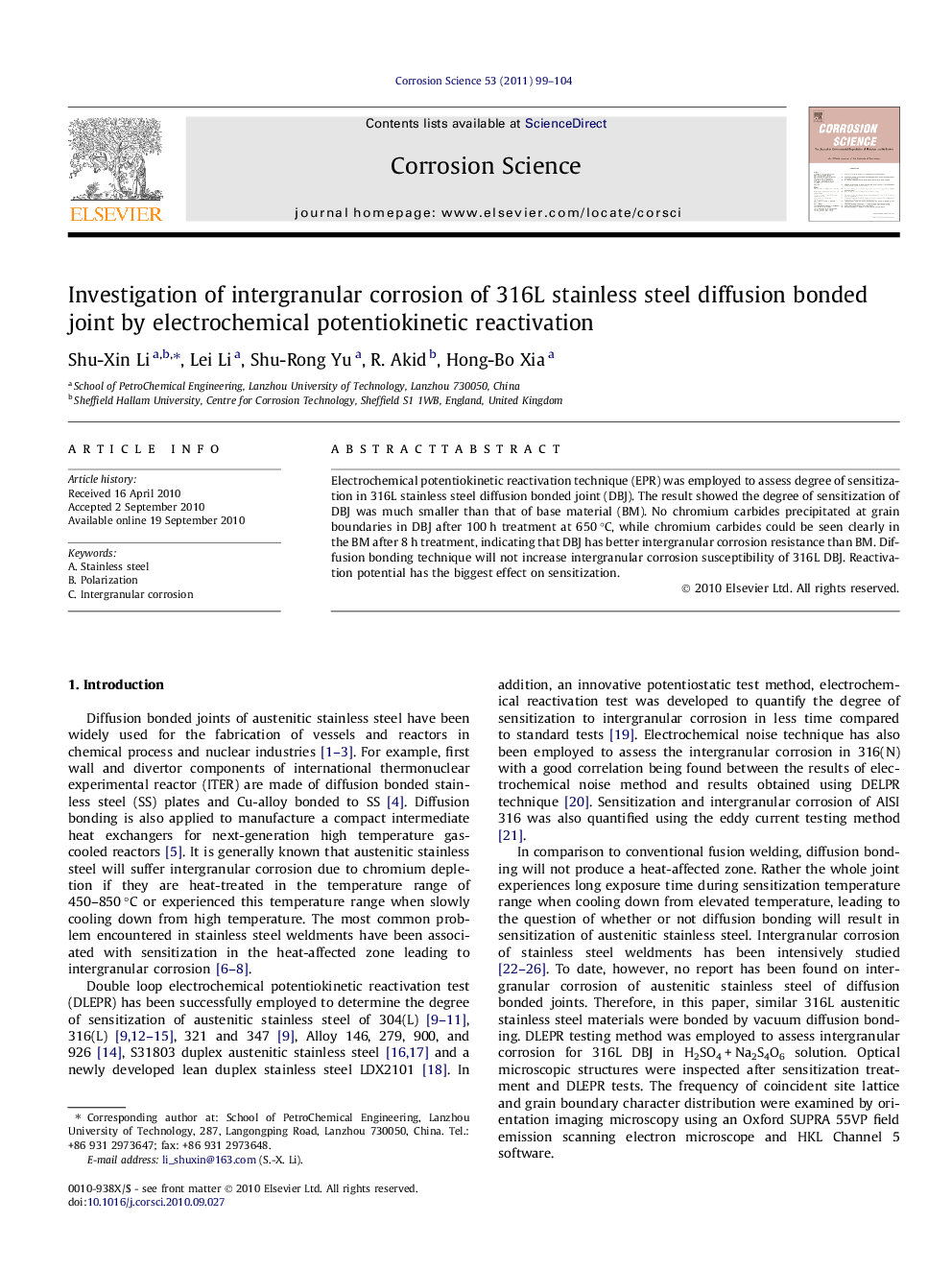| Article ID | Journal | Published Year | Pages | File Type |
|---|---|---|---|---|
| 1469815 | Corrosion Science | 2011 | 6 Pages |
Electrochemical potentiokinetic reactivation technique (EPR) was employed to assess degree of sensitization in 316L stainless steel diffusion bonded joint (DBJ). The result showed the degree of sensitization of DBJ was much smaller than that of base material (BM). No chromium carbides precipitated at grain boundaries in DBJ after 100 h treatment at 650 °C, while chromium carbides could be seen clearly in the BM after 8 h treatment, indicating that DBJ has better intergranular corrosion resistance than BM. Diffusion bonding technique will not increase intergranular corrosion susceptibility of 316L DBJ. Reactivation potential has the biggest effect on sensitization.
Research highlights► No chromium carbide precipitation was found in 316L DBJ after 100 h sensitization treatment. ► Diffusion bonding technique will not increase intergranular corrosion susceptibility of 316L. ► The large grain size and twin-induced low CSL boundaries lead to the increase of intergranular corrosion resistance of 316L DBJ.
